First Impressions on Delivery Day of Porsche 911 GT3 (991.2)
公開日:2019.06.05
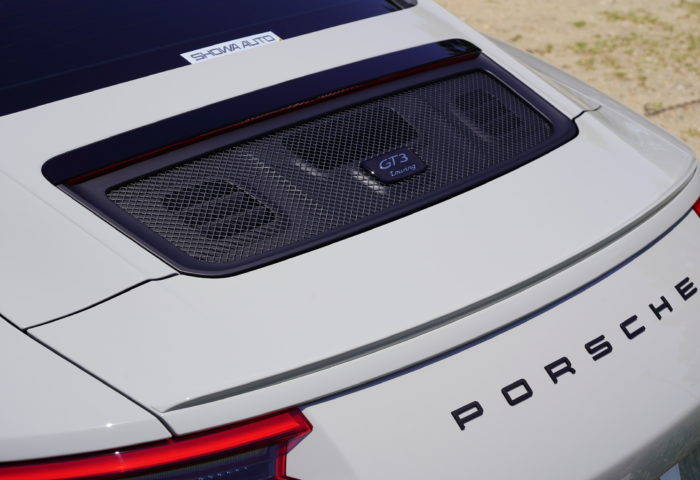
First Drive in the GT3 Touring
The GT3 Touring was delivered recently, and on the very day of delivery, we drove about 200 km. Today, I’d like to share my husband’s first impressions from that initial drive. By the way, if you’re interested in the options and specifications of the GT3 Touring he purchased, please check out the article linked below.
Born in Flacht
When I first bought a Boxster, I thought, “Someday, I want to drive a GT3.” Since then, whenever I saw a GT3 on display at the dealer, I’d think, “That’s really something.” Now, I finally have one in my hands.
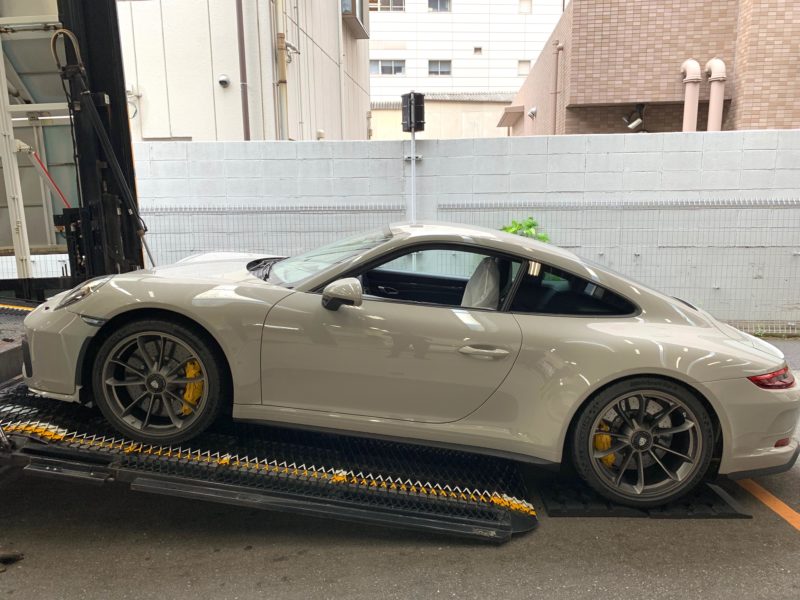
This GT3 was developed in Flacht, Germany, where Porsche’s motorsport development base is located, and produced at the Zuffenhausen factory. After a long journey of over 9,300 kilometers as the crow flies, it has finally arrived. Well done.
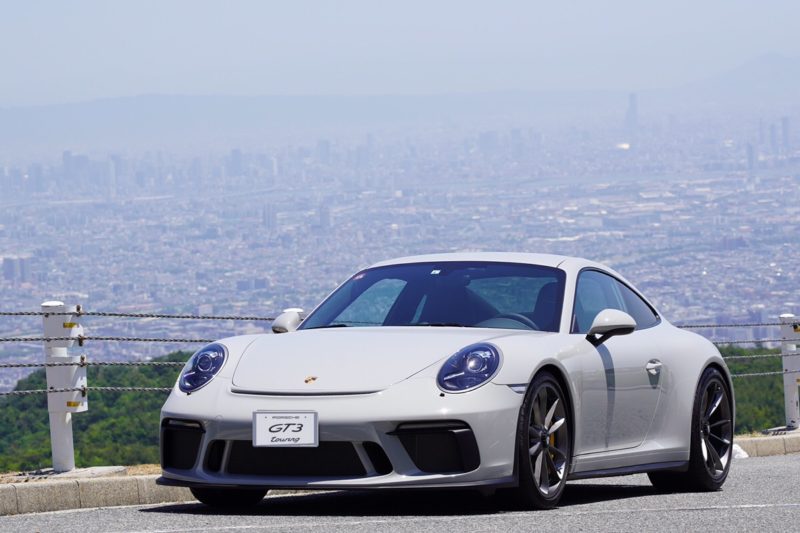
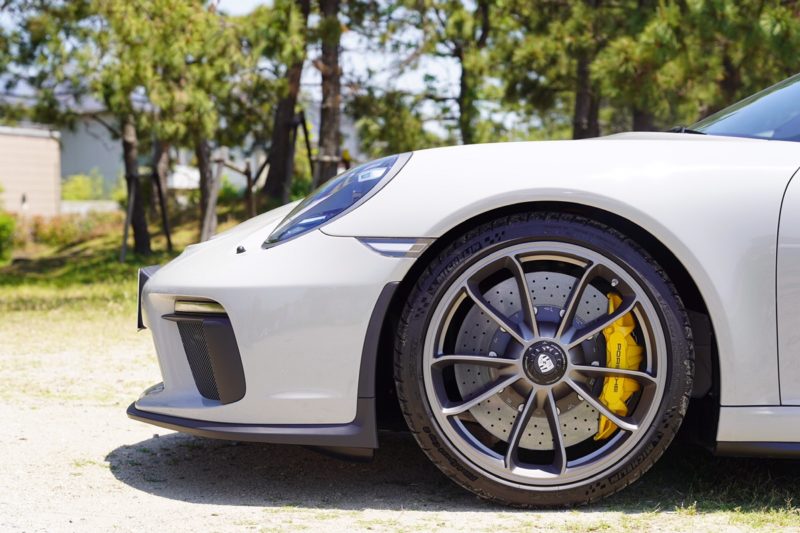
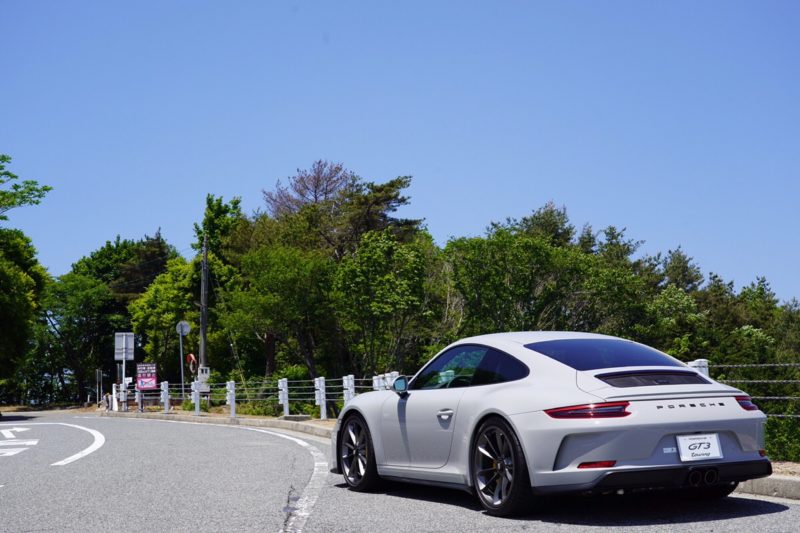
At this level of car, resale value tends to hold up well, so many owners often replace their cars frequently without driving them much. But I believe that “Porsche is meant to be driven. Let supercars be the ones to sit pretty in garages.” So I plan to drive it hard and without hesitation.
According to the late Arikazu Tokudaiji, it takes about five years to truly understand the 911.
No matter what happens, even if you think you’re bored, you have to drive this car for at least five years.
If you don’t, you’ll never really understand the 911.
I don’t know how many years I’ll keep it, but I plan to use it freely for shopping, convenience store runs, commuting, driving the kids around, and of course, touring.
One of my wife’s Twitter followers jokingly called it the “‘Commuting Package’ instead of the Touring Package (TP),” and that’s exactly how I intend to use it. I think that’s also a way to show respect to the Porsche engineers and factory workers who were involved in making this car.
Delivery Day
Engine & Transmission
The GT3’s engine wakes up energetically after a mechanical cranking sound. When exhaust gases exit the muffler after combustion in each cylinder, there’s a slight backfire-like pop before it quickly settles into idle.
The GT3’s engine start-up sound is relatively loud. The Boxster GTS is similarly loud, but the tone is different. The GT3’s sound has a stronger mechanical character and a heavier tone.
The clutch is surprisingly light for this power level. The shift lever is the same short-throw type as other GT-series Porsches, but slightly shorter than the Boxster GTS’s. Using this shifter, you operate the ‘GT Sports Manual Transmission’ developed specifically for the GT3.
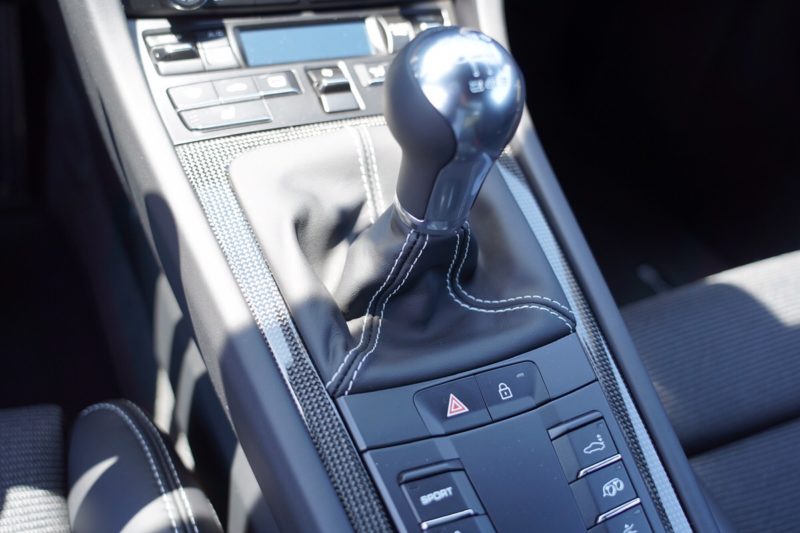
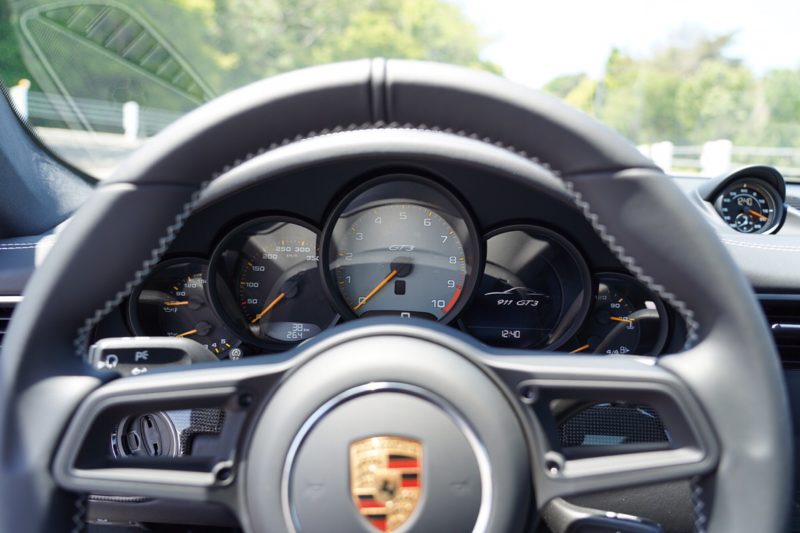
The shift stroke is extremely short. The spring force returning it to neutral is strong, and it clicks satisfyingly into gear. This feel is several steps above the Boxster’s. The clutch engagement point is clear, with no two-stage feel like the Boxster’s. (This is a difficult nuance to describe. I struggled to get used to the Boxster’s initially.)
Once moving, the engine noise is quieter than expected. Turning on the sports exhaust adds a bit more bass, but at town speeds, it’s not noisy. Later, I found out that the sports exhaust flap opens around 3,800 rpm.

If you turn it on while idling, the flap opens and the sound gets louder, but once you engage a gear and start driving, it closes again and reopens near 3,800 rpm. So, the sound doesn’t change much at town speeds. In fact, pressing the button around 2,000 rpm barely changes the sound.
This is likely to comply with noise regulations, as the vehicle inspection certificate states:
Heisei 28 noise regulation vehicle, noise category M1C1A, proximity exhaust noise 95db, measured at 3800 rpm (old standard measured at 4000 rpm)
From forums, it seems overseas models have the same control rpm.
Still, the GT3’s weight-saving measures remove many sound insulation materials, so mechanical noises are quite audible. You can clearly hear gear noise, engine noise, and some rattling from the rear, especially until the oil temperature rises.
At 2,000–3,000 rpm, the Boxster GTS produces a more distinct and pleasant exhaust note that’s easy for anyone to appreciate, but the GT3 is different. It has more mechanical noise.
It’s hard to describe, but the Boxster tends to make a ‘quorn, bababa’ (backfire) sound even at relatively low speeds, which is a clear and entertaining effect. Those who like supercar-style sounds might prefer the Boxster GTS.
The GT3, on the other hand, sounds like a somewhat muffled ‘groan’ at low revs, then when the flap opens, it suddenly roars ‘Pwooon!’ loudly. The volume increases as the revs rise. Notably, there’s no backfire sound effect; it’s tuned purely for performance.
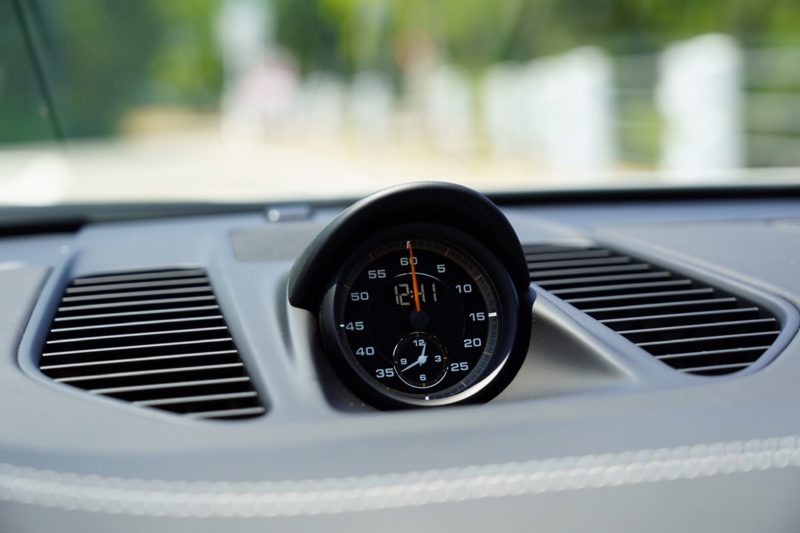
Next, about the engine feel.
At first, in town, it felt like a “very tightly built engine,” and including the gear noise, I wondered, “Can it really rev smoothly to 9,000 rpm?” Of course, the tachometer needle moves quickly, showing it’s a high-performance engine, but right after delivery, it felt stiff and heavy.
Since it was still in break-in, I avoided pushing it hard, but even so, the acceleration felt overwhelming on regular roads. In tunnels on the highway, the sound echoed so much that cars ahead moved over to the driving lane as if scattering like spiders, even though I wasn’t tailgating. It made me feel a bit sorry.
According to Porsche’s press materials, this engine is “almost unchanged from the 911 GT3 Cup engine” and is clearly labeled a ‘race engine.’’ That explains a lot. Yet, it doesn’t sacrifice usability at low or town speeds; in fact, it’s very easy to handle. Having experienced various high-revving engines from other manufacturers, I’m reminded once again that Porsche’s balance is excellent.
Ride Comfort & Suspension
The first impression when driving was that it’s “very comfortable.” Compared to the Boxster, it feels even flatter and absorbs fine vibrations well. It’s firm, but the suspension feels unusually low-friction.
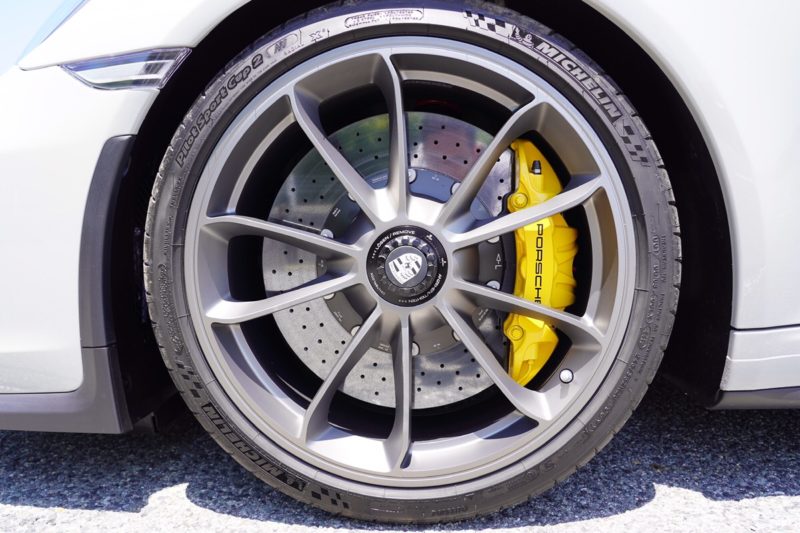
On smooth roads like highways, it glides along incredibly smoothly. This is among the top one or two sports cars I’ve ever experienced in terms of smoothness.
On the other hand, on bigger bumps or uneven, asymmetric surfaces, there’s a noticeable side-to-side sway. This is unavoidable due to the short suspension travel, but the shocks themselves are well softened, so even with my back problems, I don’t get any pain.
Regarding the suspension, I feel it wasn’t developed primarily for comfort but rather to keep the tires firmly planted on the road. Tire contact is crucial in circuit and race driving because consistent contact improves traction and cornering grip, leading to better lap times.
The GT3’s road-holding is very strong. Therefore, even on rough surfaces, the suspension flexibly presses the tires onto the road, which probably explains the good ride comfort.
By the way, setting PASM(suspension setting) to ‘Sport’ makes it a bit firmer, but on smooth roads, the difference is barely noticeable. You’ll notice it more on rougher winding roads. In those cases, ‘Sport’ is not recommended. While it reduces body roll, it tends to bounce, reducing tire contact and making the drive less pleasant.
I read in an article where the Cayman GT4 developer said that ‘Normal’ mode is optimized for running the Nürburgring Nordschleife. Indeed, the Nordschleife has tough undulations and some rough patches.
Also, the GT3 manual states that ‘Sport mode is suitable for flat race circuits.’ So if you’re driving on regular winding roads or mountain passes, unless the surface is very smooth, it’s better to stay in Normal mode.
Finally, about the seats.
This time, we chose the optional ‘Adaptive Sports Seat Plus (18-way electric)’, which is a step above the Boxster’s ‘Sports Seat Plus (2-way electric)’.
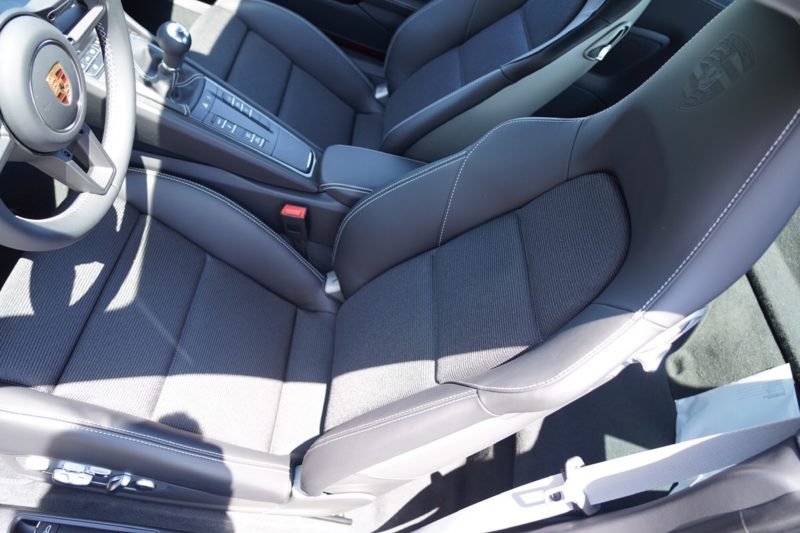
The seat shape is almost the same, but while the Boxster GTS has full leather, the GT3 Touring Package uses fabric on the seat cushion and backrest.
The seat cushion is quite firm and feels similar to the lightweight full bucket seat I once sat in on a friend’s GT3. It has a solid core with moderate softness, very comfortable, and offers many electric adjustment options. These include:
- Backrest angle
- Seat height front-to-back
- Seat length
- Seat side bolster width
- Backrest side bolster width
- Lumbar support (height and thickness)
Though I have back pain, the wide adjustment range makes this seat very comfortable. Especially, adjusting the width of the side bolsters on the seat and backrest firmly holds the body during driving, which reduces strain on my back.
For reference, here’s how the Porsche seats at our home rank in terms of back pain impact (individual results may vary):
GT3 Touring < Boxster GTS < Panamera Turbo < 911 (964)
The 964’s seat is the hardest on my back, and I still haven’t found the perfect position. The GT3’s seat is truly easy on the back and should be comfortable even for long tours of 500 km per day.
These are my first impressions from delivery day. As I put more miles on it, I expect to discover new things, which I’ll report on in due course.
On to the Break-In Touring
How was that? The day after delivery, my husband set off on a break-in tour to Shikoku. I’ll share that experience in another article soon. By the way, the documentary of the GT3 Touring delivery day is summarized in this article:
このブログが気に入ったらフォローしてね!


Comment ( 0 )
Trackbacks are closed.
No comments yet.